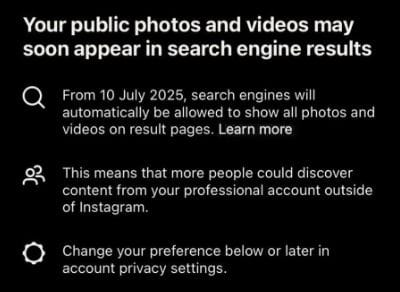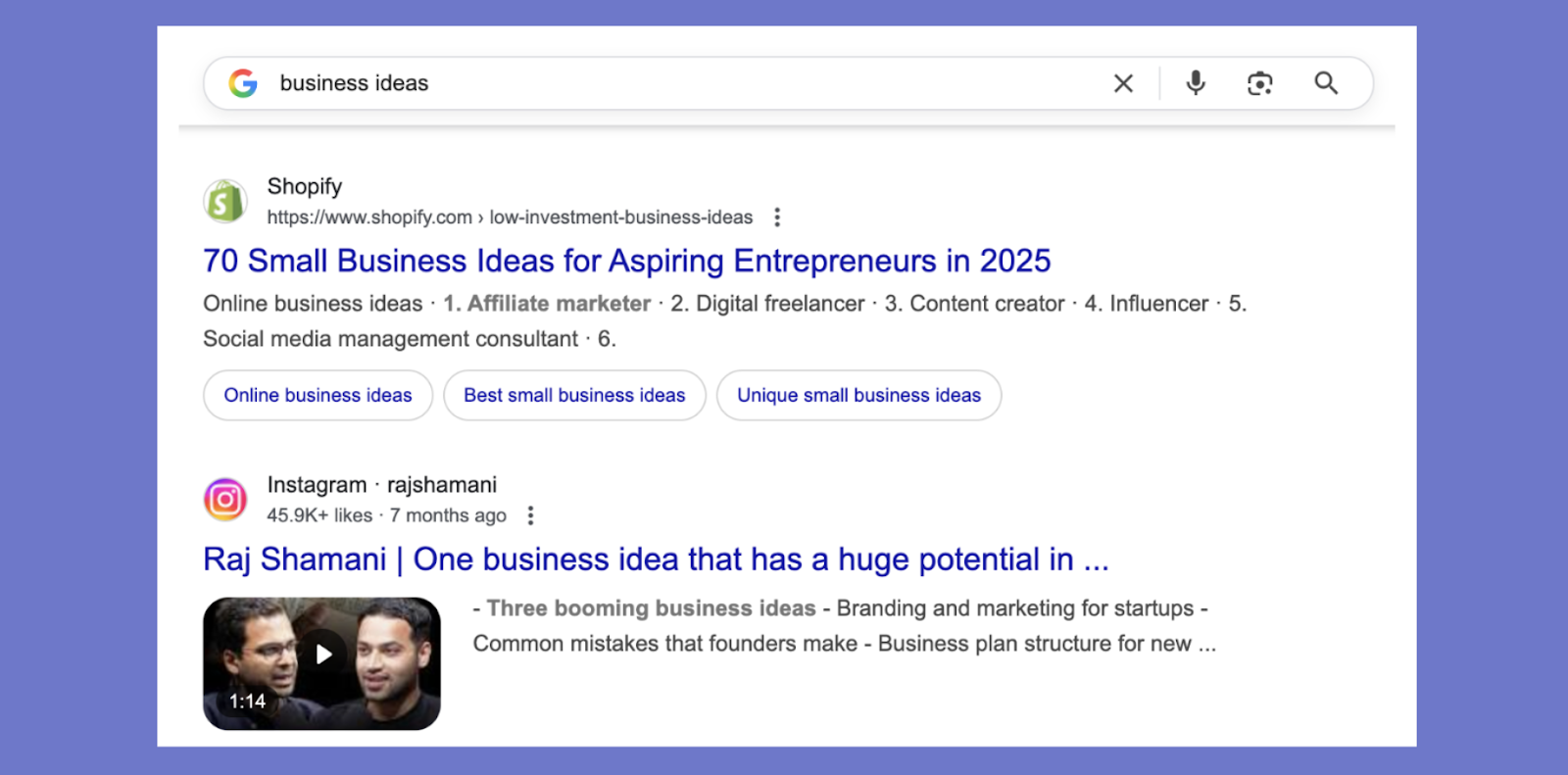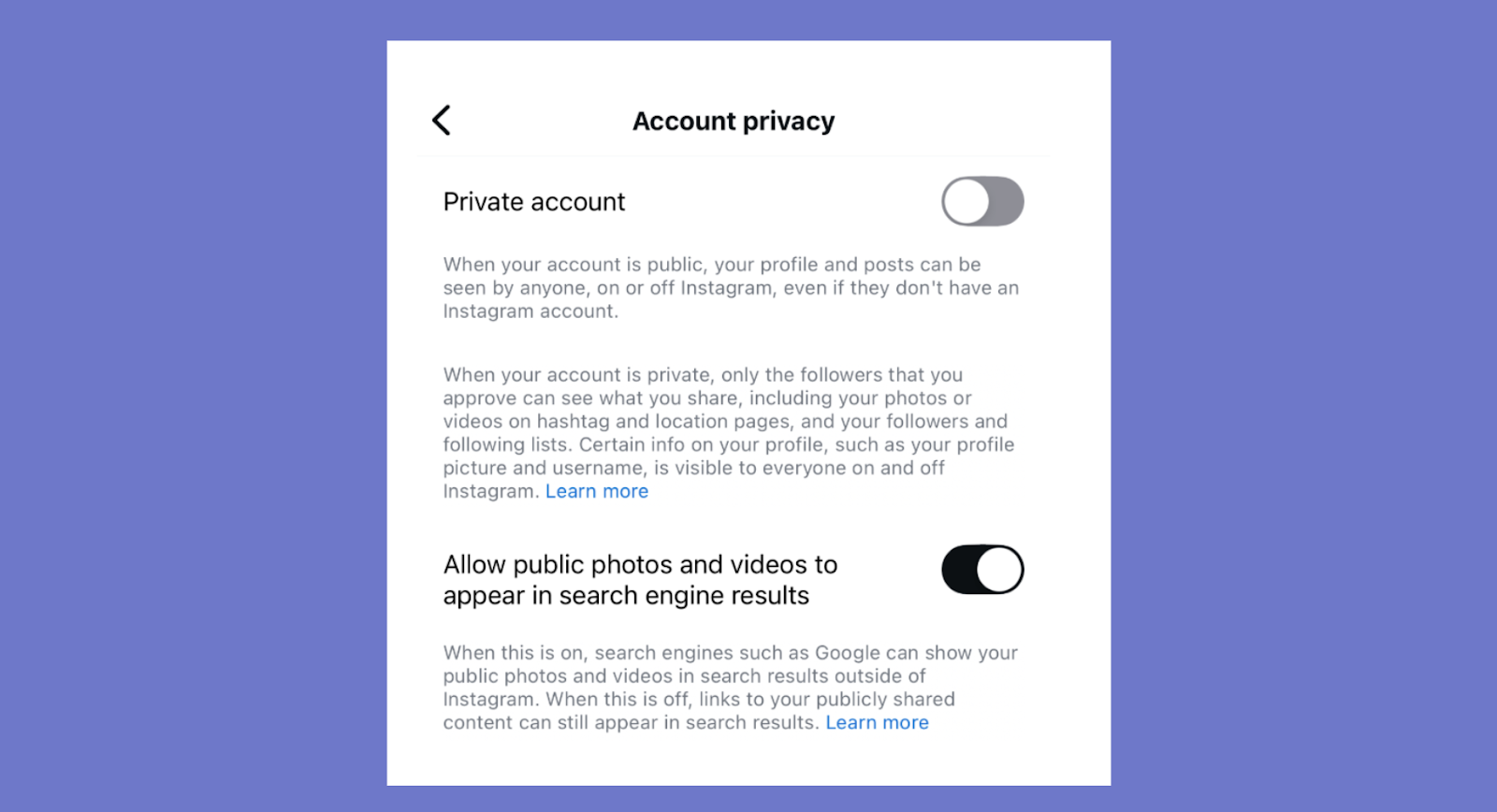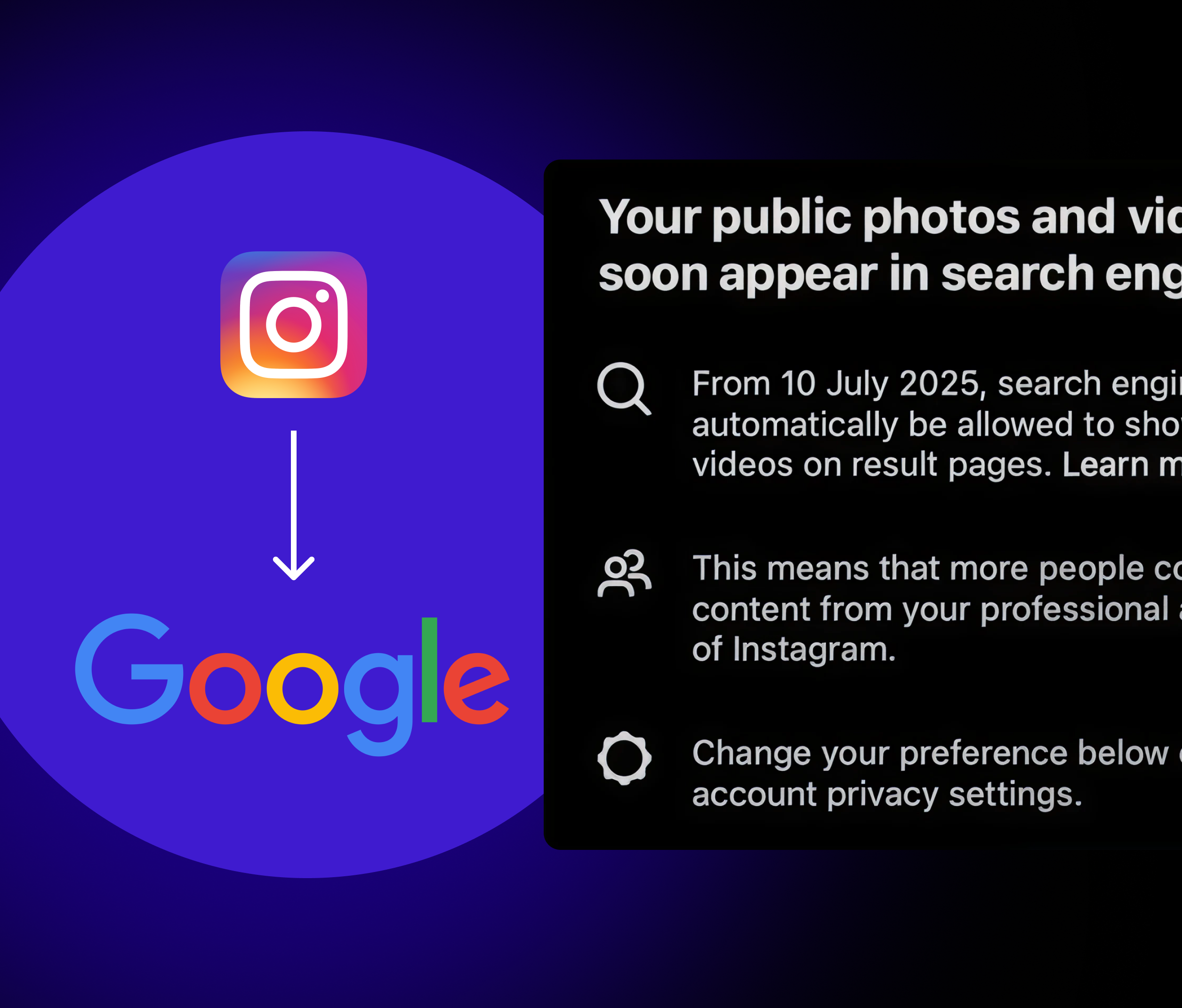Over 95 million photos and videos are shared on Instagram every day. Until now, that content lived almost entirely inside the app, discoverable only by followers, hashtags, or in-feed algorithms.
That’s changing. As of July 2025, Instagram has started allowing public posts from professional accounts (business and creator) to appear in Google Search results. That includes Reels, photos, videos, and carousels.
For ecommerce brands, this is a major shift. By allowing public content from professional accounts to surface in search results, Instagram is positioning itself alongside platforms like TikTok and YouTube, both of which already perform well in Google’s algorithm.
Instagram is increasing discoverability for creators and brands, giving them the chance to get in front of audiences not actively scrolling on the app—people searching with intent on Google.
Here’s what’s changing and how to take advantage.
What’s changing: Instagram content will now be indexed on Google search
Instagram has started rolling out a feature that allows your content to appear directly in Google search results. If you run a professional account (business or creator, 18+), your public posts (including Reels, carousels, images, and videos) can now be indexed by search engines like Google.
This change is enabled by default, but account holders still retain control. If you prefer to keep content discoverable only within Instagram, you can turn this feature off in your privacy settings.

Who this affects (and who it doesn’t)
This update only applies to:
- Professional accounts (business or creator)
- Users who are 18 years or older
- Public content only
Private or personal accounts remain unaffected. If your account is personal or if your posts are set to private, they won’t appear in Google search.
Instagram’s history with indexing (and why this is different)
Google has technically been indexing some Instagram pages for years, even though Instagram’s robots.txt file blocked access. What’s different now is that:
- Indexing is officially supported and structured.
- Instagram is surfacing post-level content, not just profile pages or hashtags.
- The opt-in feature gives users control while also enabling better crawl access for search engines.
This means your Reels, carousel posts, and videos (when public) now ranks just like a YouTube video or blog post would.
How Instagram is currently performing in search
According to recent analysis, Instagram content now shows up across all top-10 Google rankings. But the most interesting part is that it ranks most frequently between positions 2 and 5.
For example, a Reel for the keyword “business ideas” currently ranks 3rd in Google Search.

This shows that Google sees Instagram as a highly credible source. For creators, brands, and marketers, this opens up a new layer to their content strategy that blends social engagement with search visibility.
How to manage your indexing preferences
If you run a professional Instagram account and want to control whether your public content appears in Google search, you can manage this setting directly on the Instagram app.
To check or change your preference:
- Go to Settings.
- Click on Account Privacy.
- Toggle on “Allow public photos and videos to appear in search engine results”.

This setting is enabled by default for eligible accounts. You can toggle it off at any time.
What you need to know
Some key points that you should be aware of are:
- Not all content will appear right away: Instagram is rolling this feature out in phases. Some posts may take time to show up in search results, depending on crawl frequency and other technical factors.
- Your bio link still isn’t crawlable: While posts can now be indexed, links in your Instagram bio are still blocked from search engine crawlers. That means your bio won’t directly pass SEO value or drive click-through traffic from search engines.
- Indexing doesn’t guarantee rankings: Just because your content is eligible to appear doesn’t mean it will rank. Search visibility will still depend on post quality, keyword relevance, and engagement signals.
Why Instagram content indexing is a big deal for ecommerce brands
Instagram’s integration with search engines is changing how ecommerce brands should think about content, traffic, and strategy. Here’s why it matters:
- Your content now goes beyond followers: Until now, Instagram content only reached people inside the app—your followers or users scrolling on Explore whose interests match your content. With content being indexed, your Reels, videos, and carousels can drive organic search traffic from Google. That’s a completely new acquisition channel.
- Reels can double as product pages: Reels showing how a product works, customer testimonials, or “how to use” demos now have the potential to rank for high-intent keywords.
- Affiliate and influencer content has a longer shelf life: Influencer posts typically fade after 24-48 hours of relevance. But now, those same posts (if public and optimized) can continue showing up on search engines for weeks or months after publish, driving traffic and conversions long after it's published.
- UGC now supports SEO, not just social reach: User-generated content from creators no longer lives in a silo. If they’re tagging your products and sharing content under your branded campaigns, that media now contributes to your search discoverability.
- You now need to design content for search, not just engagement: If you want to be discoverable on search, your captions, visuals, and alt text need to be structured so they’re searchable. Instagram content should now serve the Instagram algorithm and be relevant for search engines.
How to optimize Instagram content for search
Now that your Instagram posts and Reels can appear in Google results, it’s not enough to just create engaging content. You need to make it searchable. That means thinking about how each element of your post helps search engines understand what it’s about.
Here’s what to focus on if you want your Instagram content to rank and drive traffic:
1. Include keyword research in your content creation process
Instagram captions are now being indexed by Google. That makes them the equivalent of meta descriptions or on-page copy.
Instead of writing purely for aesthetic or vibe, your content team should work with a keyword list tied to real search intent. For example, instead of just “hydrating serum,” identify phrases like “best serum for dry skin” or “barrier repair serum” which have a sizable search volume.
Build a short keyword set per product or campaign, and align it with the posts you’ve planned.
☃️Pro tip: Pull top keywords from tools like Semrush, Ahrefs, or Google Keyword Planner, then cross-reference with high-performing IG posts.
2. Optimize your captions for search, not just engagement
Search engines rely on your caption to understand what the post is about. This means your copy should include:
- Primary keyword near the start (first 90–120 characters may be shown in search previews).
- Clear product mentions and use cases.
- No vague hooks (“We love this!”) without context.
For example, instead of “We’re obsessed 😍,” say, “Our barrier repair serum is packed with ceramides to help dry, irritated skin.” This not only helps Google rank the content, but also explains value to potential shoppers scanning results.
3. Include SEO guidance in affiliate and influencer briefs
If creators are posting on your behalf, they need to support your visibility goals, not just look good on social. Include the following in every brief:
- A few target keywords per product.
- Context on when and how to use them (e.g., “use the keyword ‘dry skin’ when showing our barrier cream”).
- Examples of well-written captions.
- Directions to avoid keyword stuffing or unnatural phrasing.
Most influencers won’t think about SEO by default, but when you explain how it helps their content reach more people, they’ll follow the brief.
4. Choose creators who write detailed, search-aligned captions
It’s easy to focus only on aesthetics or follower count when picking creators, but caption quality matters now. Here’s how to evaluate creators:
- They naturally write long-form, descriptive captions.
- They use product names and keywords without being overly promotional.
- They break down ingredients, use cases, or product experiences in a way that matches search queries.
5. Audit your best-performing content and improve for search
Your top posts already have social proof and traction. You just need to make them SEO-friendly:
- Review captions and add relevant keywords where possible.
- Include missing context (e.g., product name, category, use case).
- For affiliate content: ask creators to revise high-performing posts with updated captions and explain the benefit. This creates a longer discovery window via search, not just social.
6. Monitor what’s already ranking (and where)
Once content is optimised, tracking visibility is key. Keep in mind that indexing takes time. Here’s how to monitor progress:
- Search branded and product phrases (e.g., “Obvi collagen protein” or “best blue light gummies”) and see if your Instagram posts show up.
- Use Google Search Console if Instagram URLs start appearing in your branded queries (this may take 2–6 weeks, depending on crawl timing).
- Track keyword trends using SEO tools to identify which keywords your audience is using and which ones have content gaps.
Set up a social media presence that is search optimized!
With Instagram content now appearing in Google search results, your social presence can drive organic discovery, not just in-app engagement. For ecommerce brands, this update creates a new opportunity. Every Reel, carousel, and influencer post can now make your brand discoverable among search traffic, too.
This is especially valuable if you rely on influencer and affiliate programs because now, content from your creators isn't limited to your followers or their audience. Instead, it has the potential to rank for product-specific, category-level, and even branded keywords on Google.
If you run affiliate or influencer programs, make sure that your creator briefs include clear guidelines on relevant keywords for each product, clear examples, and tips for using keywords while staying authentic.
Social Snowball makes it easy to streamline creator relationship management. Use built-in chat, mass messaging, or automated updates to share campaign changes, content prompts, or performance milestones, all from one centralized dashboard.



.webp)







